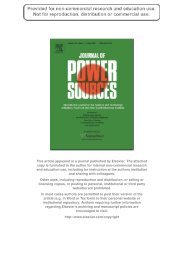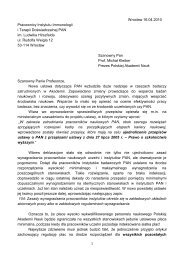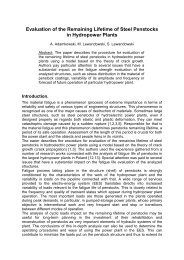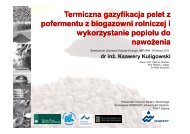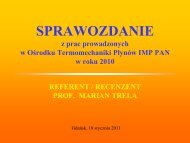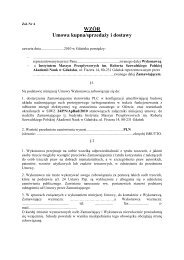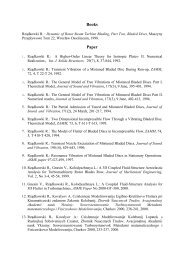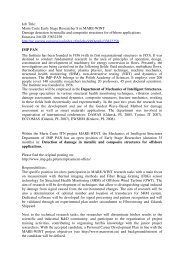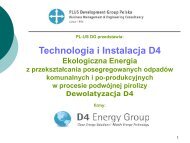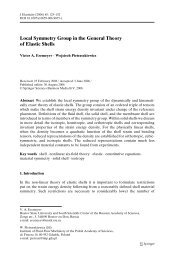Phenomenological models of cavitation erosion kinetics
Phenomenological models of cavitation erosion kinetics
Phenomenological models of cavitation erosion kinetics
- No tags were found...
Create successful ePaper yourself
Turn your PDF publications into a flip-book with our unique Google optimized e-Paper software.
8 International Cavitation Erosion Test Seminar, Sopot, 1-2 June 2000∆V, mm 3∆V, mm 320018016014012010080604020IMP PAN (RD) 1H18N9TStellerNoskievic, Sitnik00 200 400 600 800 1000 12005040302010Stellerczas, minIMP PAN (RD) 1H18N9TNoskievicSitnik00 100 200 300 400 500czas, minFig.5 Erosion curves obtained at the IMP PAN rotatingdisk facility (the exposure period <strong>of</strong> 20 h duration isanalysed)∆V, mm 35040302010IMP PAN (RD) 1H18N9TSitnikNoskievicSteller00 100 200 300 400czas, minFig.6 Erosion curves obtained at the IMP PAN rotatingdisk facility (the exposure period <strong>of</strong> 6 h duration isanalysed)The work on ensuring full reliability<strong>of</strong> calculations according tothe J.Noskievič model is now in progressand is expected to end successfullyin a short time. Neverthelessthe authors are reluctant to recommendit as an element <strong>of</strong> more sophisticatedalgorithms due to a rathercomplicated form <strong>of</strong> formula (5),incorporating additionally some periodicalfunctions.No numerical problems havebeen encountered when testing themodel <strong>of</strong> K.Steller. However, oneshould notice the non-vanishing firstderivative <strong>of</strong> formula (7) at the beginning<strong>of</strong> the process, which canresult in improper modelling <strong>of</strong> theincubation period and improper assessment<strong>of</strong> the maximum instantaneous<strong>erosion</strong> rate (Fig.5b). On theother hand side, if the analysis isconfined to the period precedingattainment <strong>of</strong> the maximum cumulative<strong>erosion</strong> rate (CER max ), the modelcan describe the reality even betterthan the other ones (Fig.6)Following the model <strong>of</strong>L.Sitnik, the <strong>erosion</strong> rate in the initialstage <strong>of</strong> damage is always equalzero. The curves obtained show avery smooth pattern, hardly dependenton the duration <strong>of</strong> analysed period.Therefore, under some circumstances,the model can describe materialperformance in the initial damageperiod worse than the other ones.An obvious advantage is the veryfact that the model has been developedbasing on considerations <strong>of</strong> thestochastic nature <strong>of</strong> the <strong>cavitation</strong><strong>erosion</strong> phenomenon. Thus, themodel is a continuation <strong>of</strong> the originalconcept <strong>of</strong> F.J.Heymann, somehowrelated to the contemporarymethods <strong>of</strong> modelling the fatiguephenomena [11].



